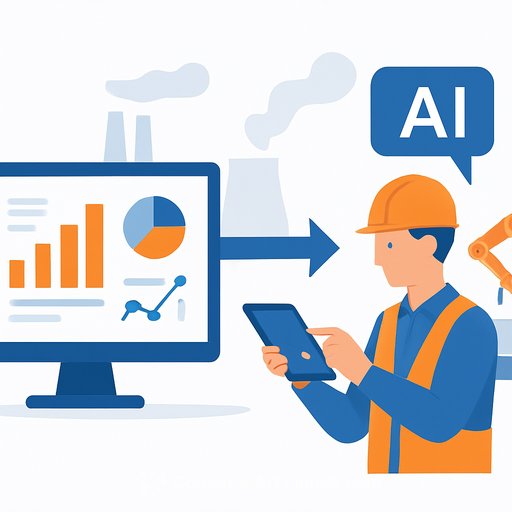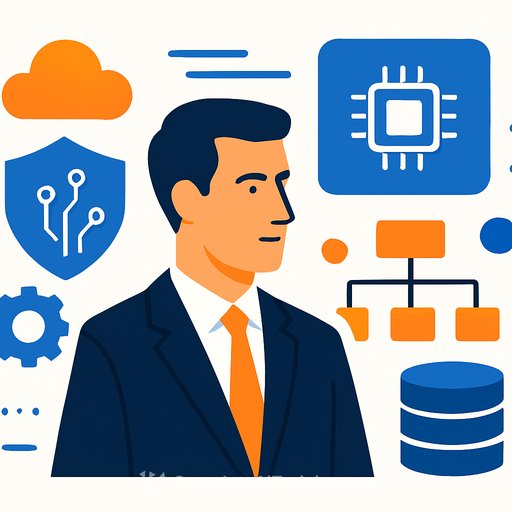AI Readiness Gap: Big Spend, Limited Deployment
Organizations are doubling down on AI for IT, yet most are stuck in pilot mode. Riverbed's latest global survey shows AI investment rising to US$27 million on average (from US$14.7 million in 2024), with 87% saying AIOps ROI meets or exceeds expectations. Still, only 12% of AI projects have reached full enterprise-wide deployment.
The message for Operations: budget isn't the bottleneck. Readiness, data quality and alignment between leaders and technical teams are.
What's Blocking Progress
- Readiness: Only 36% say they are ready to operationalize AI (down from 37% last year).
- Data quality: 88% agree it's important, but only 46% are fully confident in their data. Just 34% rate relevance as excellent, 35% consistency/standardization, and 37% security/protection.
- Reality gap: 42% of leaders say their organization is ready versus 25% of technical specialists.
The survey spanned 1,200 business decision-makers, IT leaders and specialists across seven countries, giving a clear view of how AI is being deployed across IT operations.
Fix Visibility First: Consolidate Tools, Standardize Telemetry
Observability sprawl is real. Organizations use an average of 13 tools from nine vendors. 96% are consolidating, and 93% say a unified platform would accelerate issue detection and resolution. Productivity is the main driver, even more than cost.
Standardization is winning. 88% have started with OpenTelemetry (OTel); 41% fully implemented and 47% in progress. 95% say the ability to standardize data across applications, infrastructure and user experience is critical to their observability strategy, and 94% view OTel as a stepping stone to AI-driven automation. Learn more at opentelemetry.io.
Mind the perception gap here too: 41% of leaders believe OTel is mandated vs 27% of technical specialists.
Treat Unified Communications Like a Production System
Your workforce spends 42% of the week in UC tools, and 65% say those tools are essential. Yet 43% report performance issues with video, messaging and collaboration. These issues often top the helpdesk queue, taking 43 minutes on average to resolve; one in five tickets takes over an hour.
- Instrument UC end to end: app, network and endpoint experience.
- Set SLOs for call quality and resolution time; alert on deviations.
- Reduce noise with tool consolidation and shared dashboards for NetOps, SecOps and EUC.
Data Movement Is Now an Architecture Decision
91% say the movement and sharing of AI data is important to their AI strategy; 33% call it critical. Storage is shifting to more distributed setups through 2028.
- Public cloud: 36% today → 39% by 2028
- Private cloud: 25% → 21%
- On-prem data centers: 23% → 17%
- Edge: 9% → 13%
- Co-location: 7% → 10%
Three quarters plan an AI data repository strategy by 2028. The top decision drivers: cost of data movement and storage (95%), security and compliance (94%), and network performance and reliability (94%). 78% - and 81% of business leaders - say network performance and security are critical to AI success.
Vendor Consolidation Is Picking Up Speed
93% of organizations are considering switching vendors to consolidate tools. The goal: fewer moving parts, better signal, faster resolution. This is the fastest way to close visibility gaps and reduce operational drag without blowing up workflows.
Practical Next Steps for Operations
- Run an AI readiness review: inventory projects, dependencies and gaps; assign owners and due dates.
- Stand up a data quality program: define schemas, lineage, access controls and quality SLAs; measure confidence monthly.
- Consolidate observability: target 1-2 platforms, reduce duplicate tools and standardize on OpenTelemetry for traces, metrics and logs.
- Make UC measurable: define SLOs for call quality and ticket resolution; put synthetic tests on critical paths.
- Engineer data movement: segment hot vs cold data, plan placement across cloud/edge/colo, and model egress and acceleration costs.
- Prioritize the network: optimize routes for AI data flows, enforce QoS, and validate performance and security with continuous testing.
- Close the reality gap: align leadership and specialists on definitions of "production-ready," acceptance criteria and ROI checkpoints.
As Riverbed's CMO Jim Gargan noted, enterprises want safe, secure and accurate AI that improves user experience and IT operations - and that means full AIOps support, end-to-end observability and fast, secure data acceleration.
Upskill Your Ops Team
If you're formalizing AIOps and automation skills across your team, see our AI Automation Certification for hands-on training aligned to operations workflows.
Your membership also unlocks:






